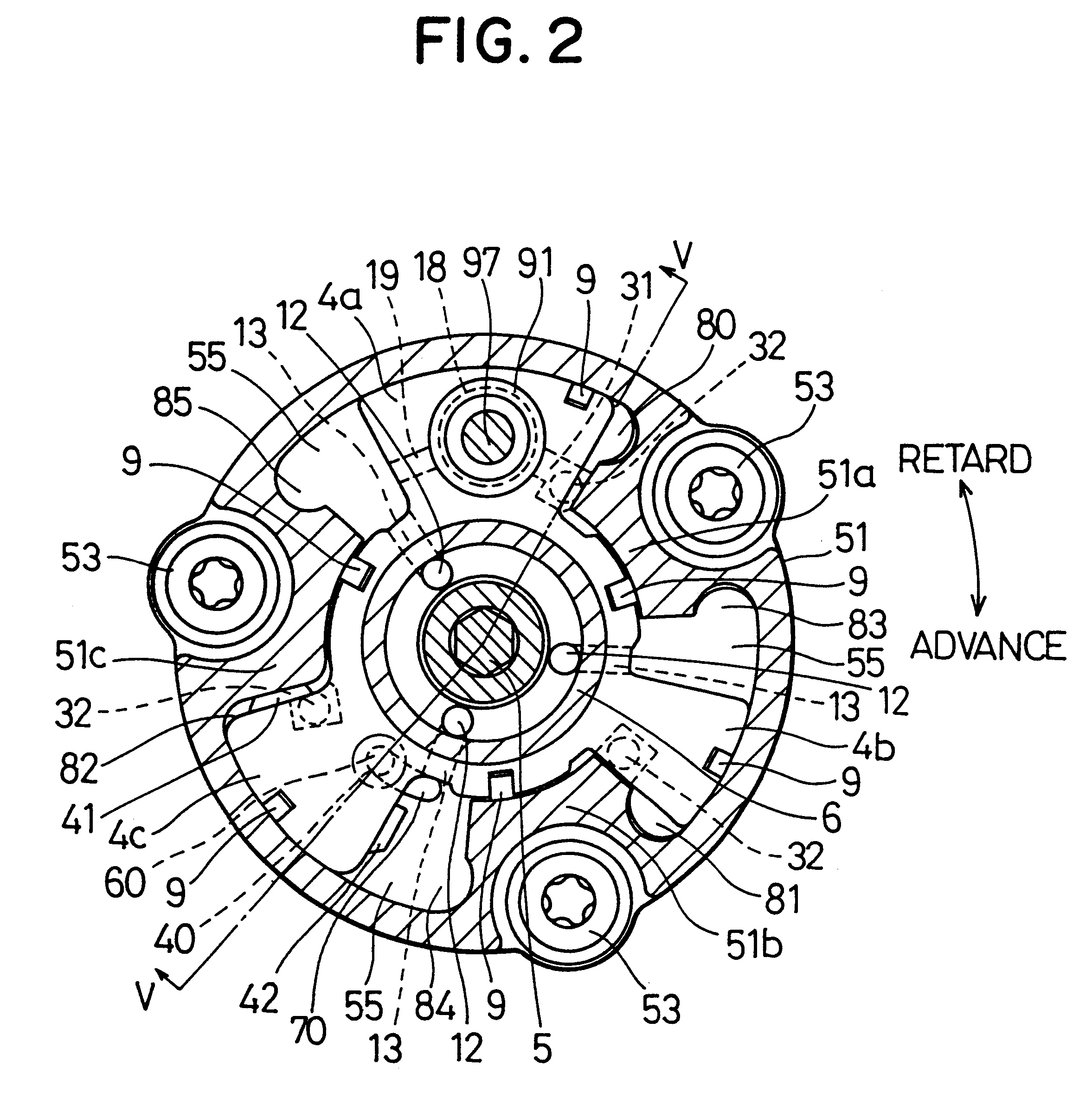Valve timing adjusting device
- Summary
- Abstract
- Description
- Claims
- Application Information
AI Technical Summary
Benefits of technology
Problems solved by technology
Method used
Image
Examples
first embodiment
Preferred embodiments of the present invention will now be described with reference to the accompanying drawings. First Embodiment
An engine valve timing adjusting device according to a first embodiment of the present invention is shown in FIGS. 1 to 10. This valve timing adjusting device 100 in the first embodiment is a hydraulic control type for controlling the valve timing of an exhaust valve.
A chain sprocket 8, as shown in FIG. 1, is coupled through the not-shown timing chain to a crankshaft acting as the drive shaft of the not-shown engine so that it is rotated in synchronism with the crankshaft by a driving force transmitted thereto. A front member 50 comprises a housing portion 51 and a bearing portion 52. The housing portion 51, the chain sprocket 8 and a later-described seal plate 7 are coupled by a bolt 53.
A cam shaft 1 acting as a driven shaft receives the driving force from the chain sprocket 8 to open / close the not-shown intake valve. The cam shaft 1 is supported by the ...
second embodiment
With reference to FIG. 11, a second embodiment of the present invention in which the fixing hole 40 of the first embodiment shown in FIG. 2 is formed in the vane 4a will now be described. The remaining structures are similar to those of the first embodiment. In this and the following embodiments, components which are substantially the same as those in previous embodiments are assigned the same reference numerals.
In the second embodiment, as shown in FIG. 11, there is formed in the vane 4a a fixing hole 44 for fixing one end portion of the torsion spring 60. As a result, this torsion spring 60 is assembled by fixing its other end portion on the chain sprocket without providing any special member for receiving the biasing force of the torsion spring 60 having a larger external diameter than the internal diameter of the vanes 4a, 4b and 4c.
Moreover, the fixing hole 44 is easily formed because the vane 4a to be provided with the stopper piston 97 as the abutting portion is made thicker ...
third embodiment
With reference to FIGS. 12 and 13, here will be described a third embodiment in which the other end portion of the torsion spring 60 of the first embodiment shown in FIGS. 1 and 3 is extended in the radial direction and in which the circumferential groove 61 is also extended in the radial direction. The remaining structures are similar to those of the first embodiment.
In the third embodiment, as shown in FIGS. 12 and 13, a torsion spring 160 functioning as first bias means is housed in a circumferential groove 161 formed as a housing space in a chain sprocket 108. The torsion spring 160 is fixed at its one end portion on the vane rotor 4 and at its other end portion on the chain sprocket 108. The other end portion of the torsion spring 160 is extended in the radial direction, and the circumferential groove 161 is so formed in the chain sprocket 108 that it is also extended in the radial direction.
The torsion spring 160 biases the vane rotor 4 in the direction of the vane rotor 4 to ...
PUM
 Login to View More
Login to View More Abstract
Description
Claims
Application Information
 Login to View More
Login to View More - R&D
- Intellectual Property
- Life Sciences
- Materials
- Tech Scout
- Unparalleled Data Quality
- Higher Quality Content
- 60% Fewer Hallucinations
Browse by: Latest US Patents, China's latest patents, Technical Efficacy Thesaurus, Application Domain, Technology Topic, Popular Technical Reports.
© 2025 PatSnap. All rights reserved.Legal|Privacy policy|Modern Slavery Act Transparency Statement|Sitemap|About US| Contact US: help@patsnap.com



